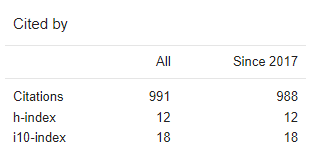Perlindungan Hukum Terhadap Anak Penyandang Disabilitas yang Menjadi Korban Perkosaan
Downloads
Abstract
The Indonesian state upholds the human rights of children as stated in Article 28B of the 1945 Constitution, including children with disabilities. It is undeniable that children with disabilities can become victims of rape, the existence of a strong perpetrator's desire, opportunity, the perpetrator's relationship with the victim, and the association of the perpetrator can form thoughts or intentions to commit the act of rape. Preventive protection is an effort to prevent rape of children with disabilities, if the act of rape has occurred, repressive protection becomes an effort to enforce the law. Giving rights to children with disabilities, such as getting special protection from discrimination, neglect, abuse, exploitation, violence and sexual crimes.
Keywords: Children with Disabilities; Legal Protection.
Abstrak
Negara Indonesia menjunjung tinggi Hak Asasi Manusia terhadap anak yang tercantum pada Pasal 28B Undang-Undang Dasar 1945, tidak terkecuali pada anak penyandang disabilitas. Tidak dipungkiri bahwa anak penyandang disabilitas dapat menjadi korban perkosaan, adanya faktor keinginan pelaku yang kuat, kesempatan, hubungan pelaku dengan korban, dan pergaulan pelaku dapat membentuk pemikiran atau niat untuk melakukan perbuatan perkosaan. Perlindungan preventif menjadi upaya pencegahan agar tidak terjadi perbuatan perkosaan terhadap anak penyandang disabilitas, apabila perbuatan perkosaan telah terjadi, maka perlindungan represif menjadi upaya penegakan hukum. Pemberian hak pada anak penyandang disabilitas, seperti mendapatkan perlindungan khusus dari diskriminasi, penelantaran, pelecehan, eksploitasi, kekerasan dan kejahatan seksual.
Kata Kunci: Anak Penyandang Disabilitas; Perlindungan Hukum.
Buku
A.s. Alam dan Amir Ilyas, Kriminologi Suatu Pengantar (Prenadamedia Group 2018).
Bahder Johan Nasution, Negara Hukum dan Hak Asasi Manusia (CV Mandar Maju 2017).
Didik Endro Purwoleksono, Hukum Pidana, (Airlangga University Press 2013).
Moeljatno, Asas-Asas Hukum Pidana, Cetakan ke Sembilan, (PT Rineka Cipta 2015).
Satjipto Raharjo, Ilmu Hukum, Cet. V, (PT Citra Aditya Bakti 2000).
Setiono, Rule of Law (Supremasi Hukum), (Sinar Grafika 2004).
Sudikno Mertokusumo, Mengenal Hukum suatu pengantar (Liberty Yogyakarta 2003).
Jurnal
Alfan Alfian, ‘Perlindungan Hukum Terhadap Kaum Difable Korban Pemerkosaan' (2015) 9 Fiat Justisia Jurnal Ilmu Hukum.
Anak Agung Istri Ari Atu Dewi, ‘Aspek Yuridis Perlindungan Hukum dan Pemenuhan Hak Penyandang Disabilitas' (2018) 13 Pandecta.
Andika Legesan, ‘Korban Kejahatan Sebagai Salah Satu Faktor Terjadinya Tindak Pidana Perkosaan' (2011) 1 Lex Crimen.
Rahayu Repindowaty Harahap, ‘Perlindungan Hukum Terhadap Penyandang Disabilitas Menurut Convention on the Rights of Persons with Disabilities' (2015) 8 Inovatif: Jurnal Ilmu Hukum.
Zendy Wulan Ayu Widhi Prameswari, ‘Ratifikasi Konvensi tentang Hak-Hak Anak Dalam Sistem Peraturan Perundang-undangan Di Indonesia' (2017) 32 Yuridika.
Peraturan Perundang-undangan
Undang-Undang Nomor 8 Tahun 2016 tentang Penyandang Disabilitas..
Copyright (c) 2022 Ananda Cindy

This work is licensed under a Creative Commons Attribution 4.0 International License.
Jurist-Diction (P-ISSN 2721-8392, E-ISSN 2655-8297), published by Universitas Airlangga, is licensed under the Creative Commons Attribution 4.0 International License (CC BY 4.0).
This license permits users to:
- Share – copy and redistribute the material in any medium or format;
- Adapt – remix, transform, and build upon the material for any purpose, including commercial use.
These freedoms are granted under the following conditions:
Attribution – You must provide appropriate credit, include a link to the license, and indicate if any changes were made. This may be done in any reasonable manner, but not in a way that suggests the licensor endorses you or your use.
No additional restrictions – You may not apply legal terms or technological measures that restrict others from exercising the rights granted under the license.
Note: As of Volume 5, No. 1 (2022), Jurist-Diction has adopted the Creative Commons Attribution 4.0 International License (CC BY 4.0), replacing its previous license (CC BY-NC-SA).


















